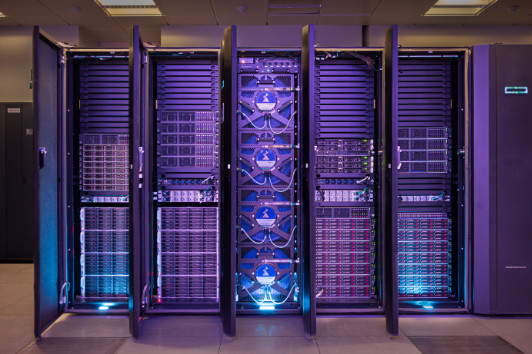LSST:UK Technology
State-of-the-art data management
Part of the UK's contribution to LSST is to process, store and manage the vast Rubin datasets to make them available for researchers.
Every night, the LSST camera will take a 3,200-megapixel image every 40 seconds. This will produce 20 terabytes of data per night that must be transferred from the camera to a data acquisition system – that's more than three years of streaming video or 50 years of streaming music. In one year, more optical and infrared images will be collected than all that have been taken previously. By the end of the decade-long LSST survey, there will be 60 Petabytes of raw data.
20 billion galaxies to discover
Over its 10-year operation, Rubin will detect many more celestial objects than there are living people on Earth: about 20 billion galaxies, and a similar number of stars. All data in the survey will be processed and made available as science-ready images, catalogs and alerts. Access to Rubin data products is via the Rubin Science Platform, Independent Data Access Centres (IDACs), and community alert brokers such as the UK-based Lasair.
On each observing night, raw images captured by Rubin will be processed within 60 seconds of capture. This will generate and emit alerts for transient detection. Sophisticated algorithms applied to high-resolution images will perform automated detection and classification.
In addition, the entire raw image set that captured by Rubin will be processed annually; this is known as Data Release Processing (DRP).

Somerville, at EPCC’s Advanced Computing Facility in Edinburgh, currently hold more than 120 billion records of astronomy observations.
(@ EPCC / Jordan Bell)